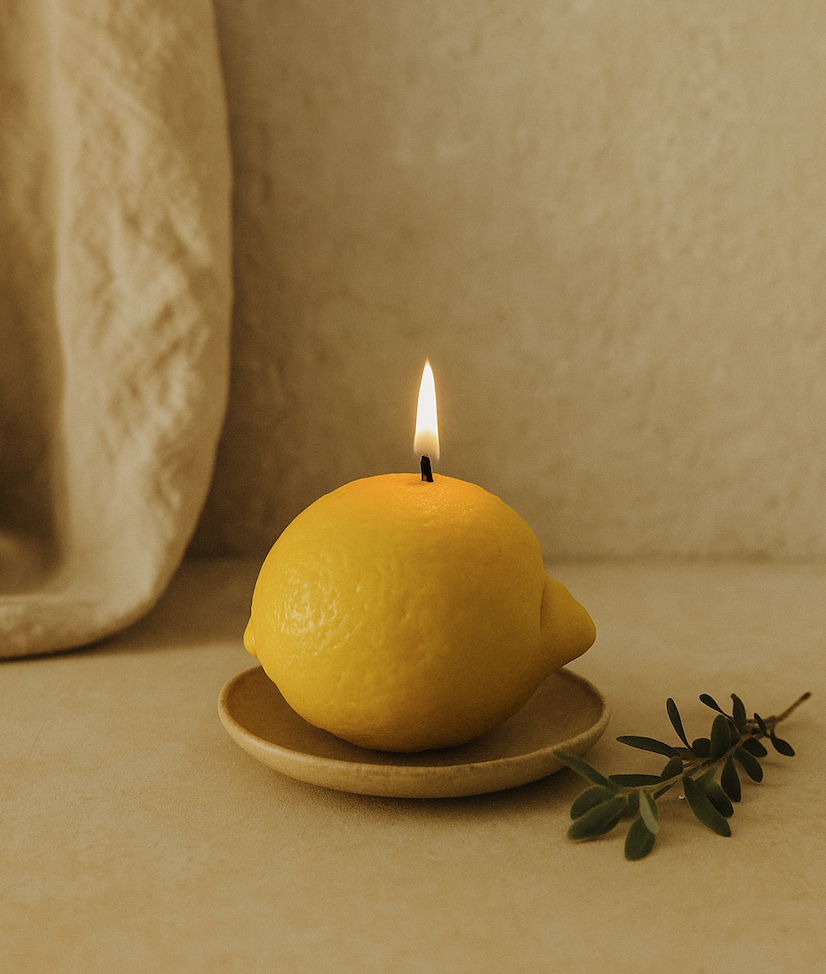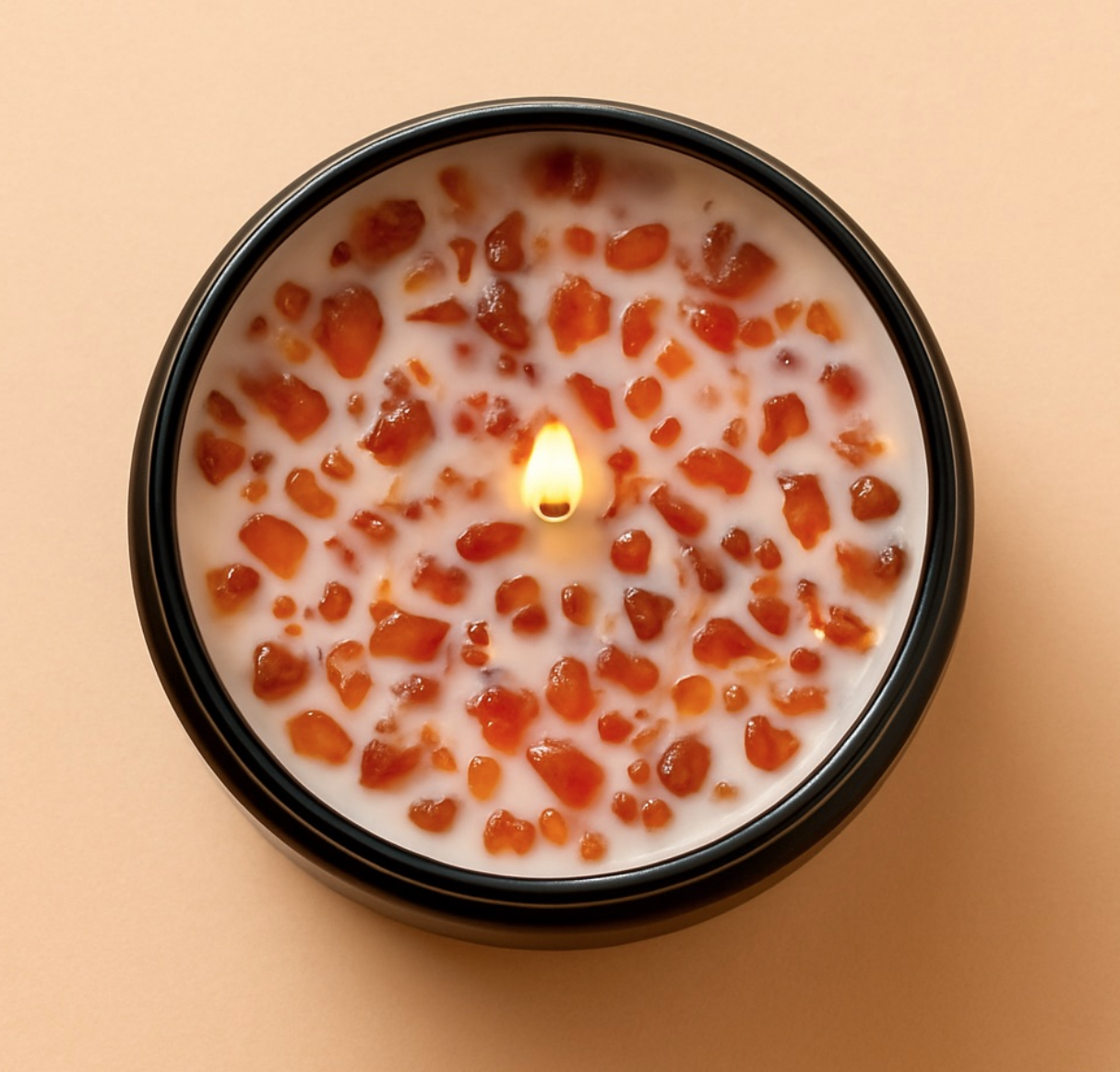House of Flame & Fable – Letter No. 1
What You Ought to Know About Candles (But Were Never Told)
A Note to the Curious
Welcome to the House of Flame & Fable a series penned as a love letter to all things made of wax and wonder.
Of course, I’m someone quite besotted with wax and scent. It’s where and how I spend a rather indecent amount of time. These letters are my way of sharing that devotion with you: an unfolding tale of mavericks and mishaps, of ancient rituals, slow alchemy, and the fine art of coaxing magic from molten pools of wax.
There is great history in this craft, of moulding, mixing, and meaning. There is also, rather delightfully, a secret history. A quiet lineage passed from hand to hand, wick to wick. The kind that tells you why one candle dances perfectly to the end… and another sputters, tunnels, or sulks in silence.
In these pages, I hope to share what I’ve learnt through triumph and error, from conversations whispered over flickering flames, and from those who have stirred wax long before I ever did. Some are legends. Some are rule-breakers. All have shaped the way I see and scent the world.
I know this world can feel perfumed and impenetrable at times. All glass domes and French words. But it shouldn’t. Candles were never meant to intimidate. They were made to illuminate. They are there to scent your moments, anchor your rituals, and light up your life in small but significant ways.
So take off your coat, shut the door behind you. Let the scent of warm beeswax and spiced oils hang in the air. I’ve been expecting you. Do come in.
Letter No. 1
Candles are everywhere now, perched on bookshelves, glowing beside bathtubs, queued like perfect little soldiers on Instagram. Scented, sculptural, ceremonial.
But here’s the thing: most people haven’t the faintest idea what they’re actually burning. Or what candles once were. Or how the quiet lineage of the flame has passed, hand to hand, wick to wick, for thousands of years.
And if you are intrigued by the magic of the flame, I think it’s time you knew.
A Short History of Wax and Wonder
Before there were electric lights, there were tapers dipped in beeswax. Candles were made by hand, often in monasteries and guild halls, and scented not with synthetic oils but with herbs, resins, and rarities brought in from the spice routes.
In Ancient Egypt, oils were poured into alabaster bowls and lit to honour the dead. In Rome, tallow was shaped into crude torches to mark the hours and ceremonies. By the 1400s, chandlers were members of official guilds, and candle shops stood proud beside the tailor and the jeweller, artisans of atmosphere.
By the time Queen Victoria was taking tea, bespoke candles were commissioned for drawing rooms and private chapels. Each scent meant something. Each vessel was a work of art. Candlelight was both a necessity and a status symbol.
What 'They' Don’t Want You to Know
Let’s talk cost for a moment. It’s important not to get enthralled by price. Higher prices do not always mean better or more luxurious candles. Candles are influenced by a delightful array of variables — ingredients, vessels (if they have them), the type of mould used, time to make, and even branding and supply chains.
There are many candles that are fabulous at various price points, so buy within your budget and based on what’s important to you. Now, most of what you see in shops is not so much candle as it is… clever packaging. Aesthetically pleasing, yes. Luxurious? Not necessarily (although I’m the first to admit that I adore a pretty package and a gorgeous brand — who doesn’t?).
But allow me to lift the lid, so to speak:
Many luxury candles are poured in anonymous factories and mass-relabelled.
That strong scent throw that hits you in the nose? Often phthalates, parabens, and fillers.
A $90 price tag can still mean paraffin wax, which is derived from petroleum.
The wick? Machine-cut, metal-cored, and untrimmed — a smoky disaster waiting to happen.
And here’s the kicker: Luxury is not the price. It’s the formulation. True luxury burns longer. I want you to remember this.
What Makes a Candle Unsafe
I wish I didn’t need to say this, but some candles are simply not safe to burn.
Look out for:
Low-grade waxes that burn unevenly and release soot.
Untrimmed wicks (or wicks made with old-school metallic cores).
Heavy synthetic fragrances that can trigger headaches or respiratory stress.
If your candle smokes, tunnels in a crazy way, burns too hot, or makes you feel… off, trust your body. It's not being precious. It's being wise.
Building a Collection
Once you’ve discovered what you adore — what makes your shoulders drop or your senses stir — it may be time to build a collection. Happily, extreme wealth is no longer a prerequisite.
The well-appointed candle shelf, in my view, should include:
A signature candle – the one your guests will always associate with you. Like a calling card in scent form.
A candle for unwinding – soft, soothing, a balm in wax.
A bright candle for mornings – think citrus, herb, clarity. Something to stir the spirit.
A candle for decadence – layered, indulgent, reserved for dinner parties or long solo baths with Ella Fitzgerald.
And remember: scent is personal. Never let someone else’s taste eclipse your own.
A Legacy, Passed Hand to Hand
Here’s what I believe: a good candle is not just something you light. It’s something you live with.
At Scented Fable, we don’t pretend to have invented this. We are simply keeping the flame alive, honouring the rituals, the care, the quiet craft passed down through time.
We use natural waxes, primarily ethically sourced local beeswax, cotton wicks, clean fragrance blends built around memory and meaning. And each candle is poured with the intention that it be more than pretty. It should be personal. It should be pure. And it should feel like something rare, because it is.
A Final Whisper
Most people will never know what makes a truly great candle. But you’re not most people.
And dear reader, if you’d like more secrets like these, sign up below. I’ll keep them coming. Not all at once. Just as they’ve always been passed down: slowly, carefully and, of course, by candlelight.
The Glossary of Flame & Fable
Chandler
A professional candle maker. Historically a member of a guild, the chandler was an artisan of atmosphere — crafting candles for churches, courts, and the well-to-do.
Bougie
French for candle — now cheekily used to describe things (and people) that are luxurious, a tad indulgent, or delightfully over the top.
Scent Throw
The strength and reach of a candle’s aroma. A cold throw is what you smell before lighting. A hot throw is what fills the room once the wick is aflame.
Tunnelling
A tragedy in wax form. When a candle burns straight down the centre, leaving untouched wax around the edges. Caused by not allowing a full melt pool on the first burn.
Trim (your wick!)
To snip the wick to 5mm before each burn. This small act prevents soot, reduces smoke, and keeps the flame steady. The secret of the well-behaved candle.
Extinguish
To snuff out your candle - elegantly, please - with a snuffer or a breath soft enough to kiss a cheek. Never blow with gusto. It’s not a birthday.
Burn Time
The total hours your candle will glow, if treated with care. Longer isn’t always better, but consistent, clean, and complete is the mark of fine formulation.
Moulded vs. Poured
Moulded candles are sculptural, shaped without containers. Poured candles are set in vessels. Both have their place; both reveal the maker’s hand.
Paraffin Wax
A petroleum-derived wax found in many mass-market candles. Affordable, yes — but prone to soot and undesirable compounds when burned.
Wax Pool
The liquid wax that forms as your candle burns. Let it reach the edges of the vessel every time — this ensures an even, tunnel-free burn.



